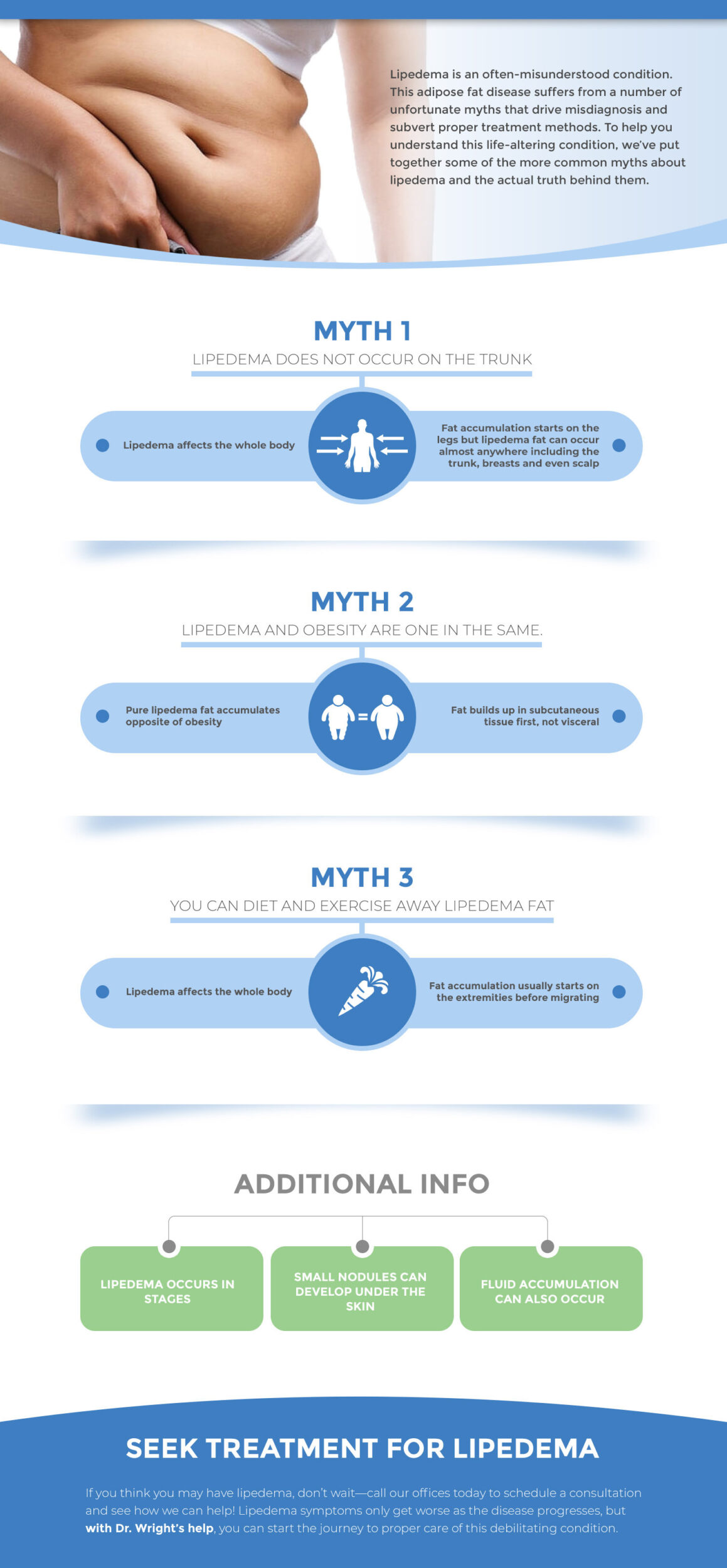One of the biggest health conditions that has many misconceptions is lipedema. It is easy to take a quick look online and see horror stories about how often lipedema is misdiagnosed. With a condition that has so many misconceptions, numerous myths have been created to mislead others. Here are the common myths associated with lipedema disorder that you need to know:
Myth: Lipedema is caused by being overweight.
Truth: Your Lipedema is NOT simply a build-up of fat tissue.
Lipedema is often misdiagnosed as just obesity and can frustrate patients. It is common to encounter doctors who will find your condition as just a lack of dieting and exercise. The onset of lipedema is often found to be during times of hormonal changes such as menopause and puberty. Many individuals who are diagnosed with lipedema are often obese before their diagnosis but numerous individuals with typical weights have also been diagnosed. Knowledge regarding lipedema continues to be scarce. While researchers continue to dive into the primary cause of this condition patients will continue to wait on what is truly causing it.
Myth: Lipedema disorder only impacts the legs and thighs.
Truth: Later stages of Lipedema can affect almost any part of your body.
While the majority of Lipedema patients will experience Lipedema fat tissue accumulation around the legs and thighs, they are not the only impacted areas. Women can also see Lipedema fat tissue accumulate around the abdomen, upper arm, and chest, especially during the later stages of the condition. Often, lipedema is first seen on the legs but later stages of Lipedema can affect fat almost anywhere under the skin on the body. In a study of 50 women with Lipedema, over 90% experienced affected arms, 88% in their abdomen, and 56% in their pelvis (1).
Myth: Lipedema is easy to treat.
Truth: Lipedema fat is not responsive to diet and exercise.
When lipedema disorder is misdiagnosed as obesity, it is commonly thought to be easy to treat with diet and exercise. Unfortunately, that is not the case as lipedema has no single treatment. There are many non-surgical treatments that help control lipedema, such as complete decongestive therapy (or CDT), compression garments, following a low-refined and low-carb diet, exercise, and manual lymphatic drainage massages. One of the most effective treatments is lymph-sparing liposuction, which can improve symptoms and halt the progression of lipedema.
Myth: I’m all alone in dealing with my Lipedema Disorder.
Truth: There’s a whole community that understands your struggle, and it’s growing every day!
You’re not alone! There are many support groups on Facebook, Reddit, and many videos on Youtube to offer support. Whenever dealing with lipedema, you might feel like you are alone. Support groups exist to help those in need such as the Lipedema Foundation and Lymphedema People. Contact these groups for any help you need.

